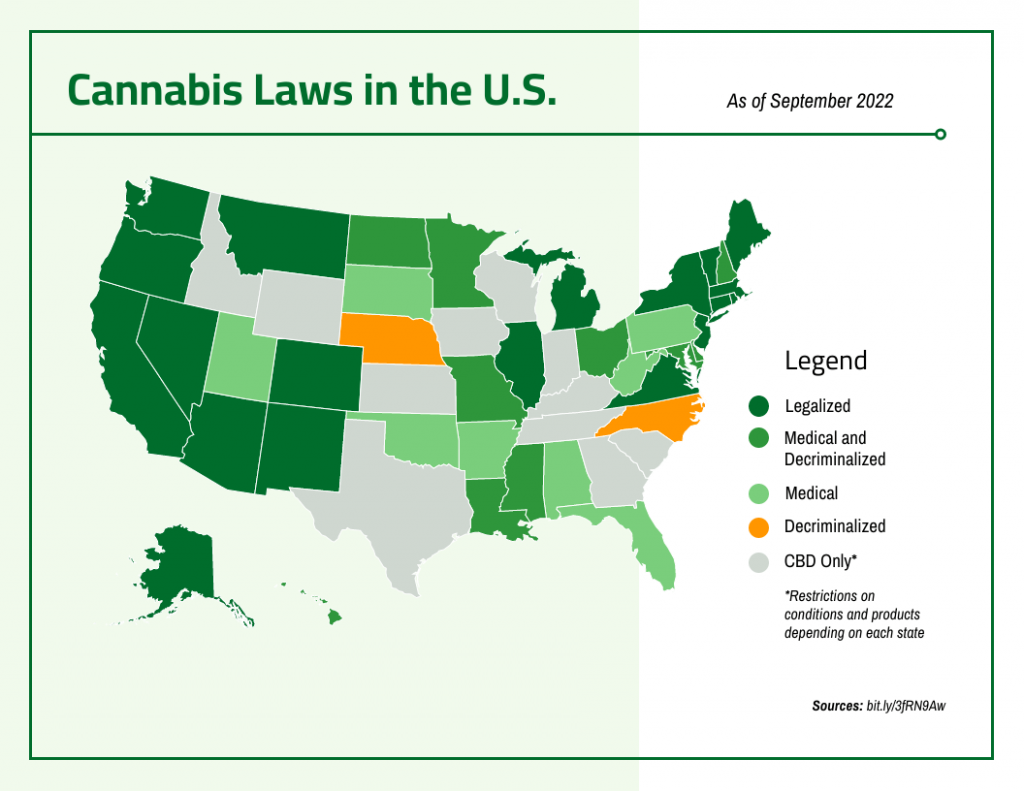Cannabis legalization in the United States presents a complex and evolving narrative, marked by varied societal attitudes, legal battles, and regulatory shifts. This independent examination delves into the intricate journey of cannabis from its early use to the present-day legal landscape, offering a broader understanding of the forces shaping cannabis policy.
Cannabis in Early America and Initial Regulations
The journey of cannabis in America dates back to its introduction by early settlers and explorers. Initially valued for hemp’s fibers, cannabis soon faced increasing restrictions paralleling societal shifts. The landmark Marihuana Tax Act of 1937, influenced by racially biased narratives, introduced prohibitive regulations, marking a significant pivot towards cannabis criminalization. This period laid the groundwork for the ensuing legal challenges and regulatory hurdles that have defined the cannabis debate in modern times.
For those interested in how hemp has evolved, Outer Space Distributions offers a fascinating array of hemp-based products, showcasing the versatility of this ancient plant. Explore their THCa Flower collection for a glimpse into modern hemp applications.
Impact of the War on Drugs on Cannabis Policy
The War on Drugs, initiated under President Nixon, significantly escalated the federal stance on cannabis prohibition. The Controlled Substances Act of 1970 placed cannabis in the most restrictive category, equating it with drugs like heroin. This era saw an increase in law enforcement action against cannabis offenses, disproportionately affecting minority communities and perpetuating societal stigmas. However, advocacy and scientific research in the late 20th century began to challenge these perceptions, setting the stage for a gradual shift in public opinion.
Shift Towards Medical Cannabis Legalization
The 1990s marked a pivotal change with California’s Proposition 215, which recognized cannabis’s medicinal value. This movement was bolstered by scientific studies highlighting cannabis’s benefits for various medical conditions. The expansion of medical cannabis laws across the U.S. followed, reflecting a growing acknowledgment of cannabis’s therapeutic potential.
The Path to Recreational Cannabis Legalization
Recreational cannabis legalization began gaining traction with the landmark decisions in Colorado and Washington in 2012. These states demonstrated the potential of regulated cannabis markets to generate revenue and reduce law enforcement burdens. The trend towards recreational legalization has since grown, influenced by shifting public attitudes and sustained advocacy efforts.
Wide-Ranging Impacts of Cannabis Legalization
The legalization of cannabis has brought significant economic and social changes. Economically, it has stimulated market growth and job creation. Socially, legalization has led to reduced cannabis-related arrests and convictions, especially in historically affected communities. Health and safety considerations remain key, with efforts focused on ensuring responsible consumption and public health.
For a broader view of how companies are embracing the evolving cannabis landscape, visit Outer Space Distributions’ homepage. Their commitment to quality and innovation reflects the dynamic nature of the industry.
This journey through the legalization history highlights the complexity and multifaceted nature of cannabis policy in the United States. As this narrative continues to unfold, it remains a topic of significant interest and debate within the broader context of social and legal reform.



